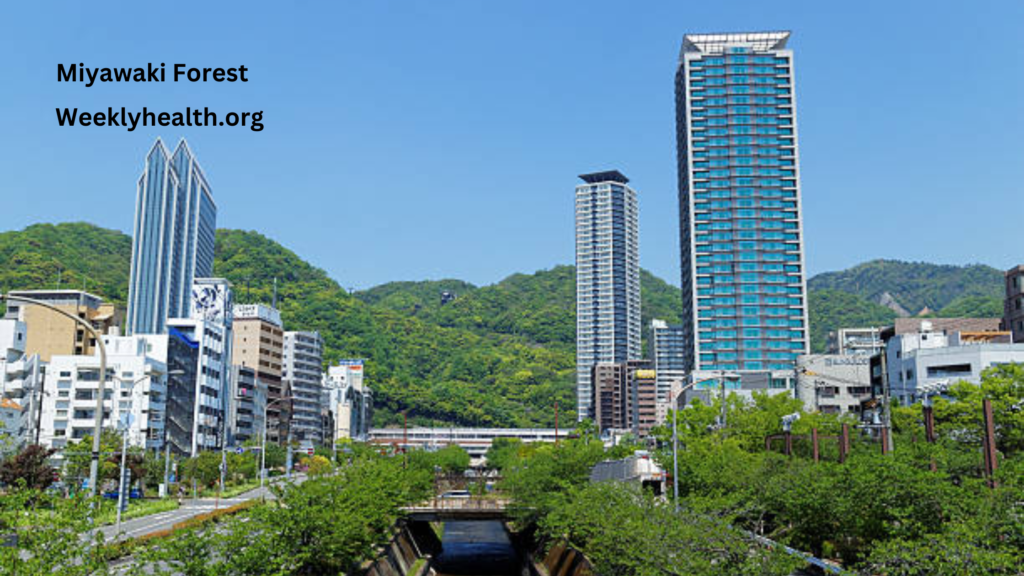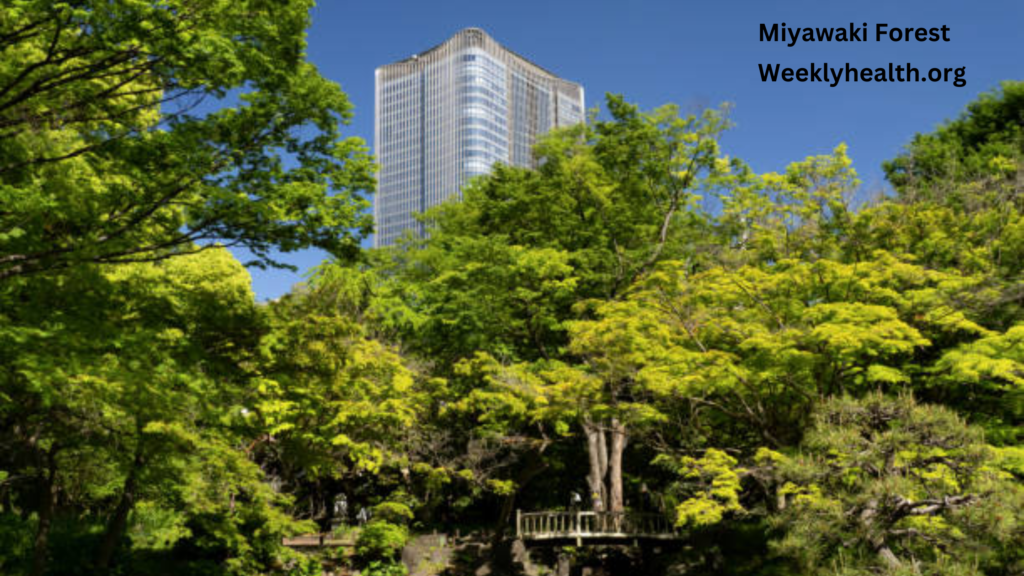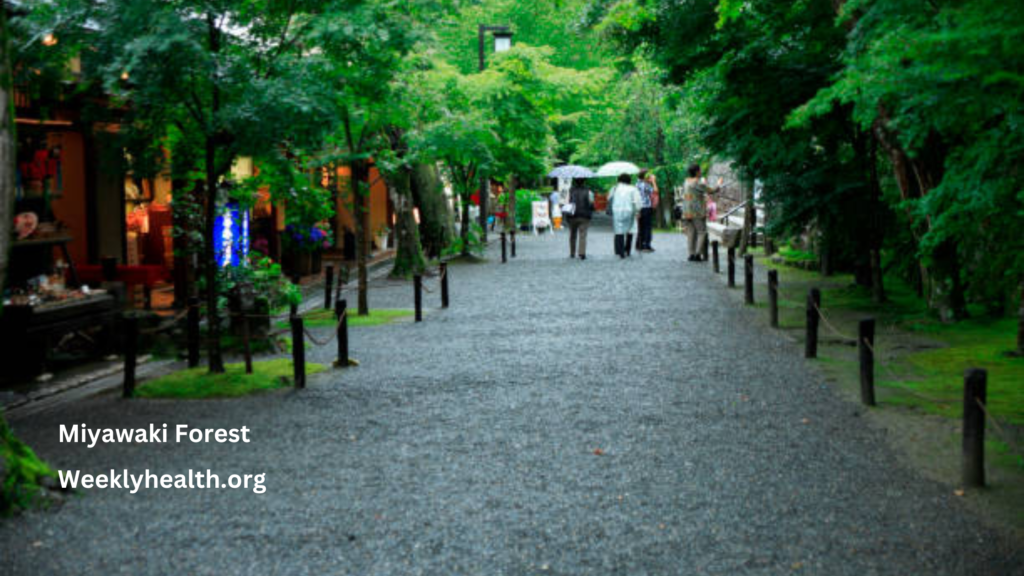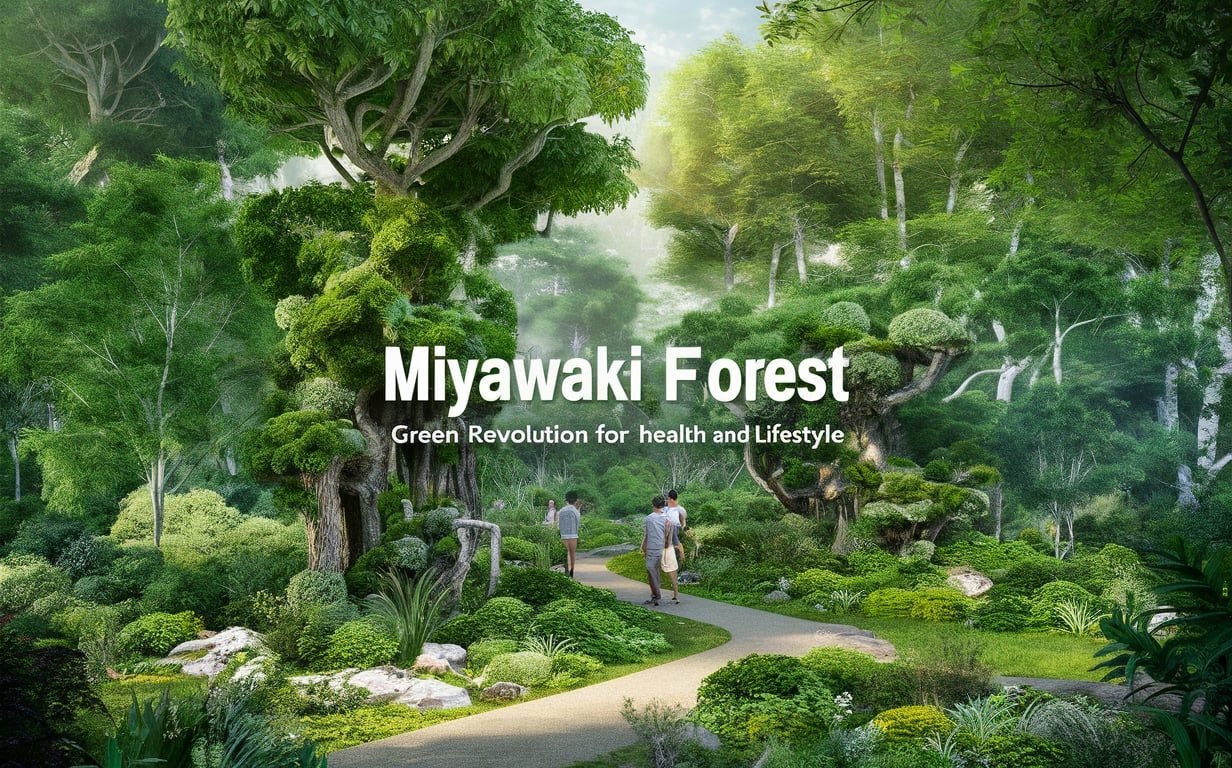Introduction
The Miyawaki method, named after its writer, Japanese botanist Dr Akira Miyawaki, is a modern approach to forest advent that has transformed barren landscapes into lush, thriving ecosystems. Unlike conventional afforestation techniques, the Miyawaki forest includes planting a diverse mix of native species densely collectively to simulate the natural development of a woodland. This technique results in a fast increase and the established order of self-sustaining forests in a fragment of the time it’d take through natural regeneration.
The effect of Miyawaki Forests is going beyond environmental restoration. These mini-forests, frequently advanced in urban and semi-city regions, have profound implications for fitness and way of life. They offer a sanctuary of green space that promotes physical, intellectual, and social well-being, making them an essential part of modern-day city planning.
The Miyawaki technique: principles and procedure
The Miyawaki technique is grounded in ecological ideas that mimic herbal forest succession. The process includes numerous vital steps:
- Soil coaching: Step one within the Miyawaki approach is careful soil education. The region-specific forest has to be clear of weeds and undesirable vegetation. Organic matter, including compost, is introduced to complement the soil, ensuring it’s fertile and capable of helping rapid plant growth.
- Species choice: Various local species are selected based on the nearby surroundings. The selection includes expanding species categorized as pioneer, secondary, and climax. Pioneer species proliferate and offer shade for slower-growing species. This diversity ensures the woodland’s resilience and long-term sustainability.
- Dense Planting: One of the Miyawaki method’s defining capabilities is the thick planting of saplings. Usually, 3 to 5 saplings are planted per square meter. This dense planting mimics herbal forests and promotes competition among flora, leading to quicker growth and more extraordinary biodiversity.
- Maintenance: At some point in the preliminary years, the forest requires average renovation, which includes watering, weeding, and protection from pests. But after about three years, the forest becomes self-sustaining and requires minimum intervention.
- Monitoring and Growth: The increase of the Miyawaki forest is monitored to ensure the ecosystem’s successful status quo. Within 20 to 30 years, a Miyawaki forest area can mature into a dense, multi-layered forest, commonly taking 200 to 300 years through natural strategies.

Health Benefits of Miyawaki Forests
The fitness blessings of Miyawaki Forests are multi-faceted, impacting both physical and intellectual well-being. These blessings stem from the forests’ potential to enhance air satisfaction, lessen noise pollution, decorate physical interests, and offer a natural area for mental relaxation.
Improved Air Quality
One of the most substantial fitness benefits of Miyawaki Forests is their capability to improve air fine. Urban regions frequently suffer from high tiers of air pollutants because of automobile emissions, industrial activities, and other human activities. Trees in Miyawaki Forests take in contaminants, which include carbon dioxide (CO2), sulfur dioxide (SO2), nitrogen oxides (NOx), and particulate count (PM2.5), that are dangerous to human fitness. The dense plant life in those forests acts as a natural air clearout, lowering the attention of pollution in the air and contributing to cleaner, healthier environments.
More suitable respiratory fitness
The presence of trees and flowers in Miyawaki Forests reduces airborne pollutants, improving respiratory fitness. People living near those forests enjoy decreased respiratory conditions, including asthma, bronchitis, and other lung illnesses. Additionally, the timber releases oxygen through photosynthesis, increasing the supply of sparkling air and promoting higher lung function.
Pressure reduction and mental well-being
Miyawaki Forests offers tranquil surroundings that foster intellectual well-being. The herbal surroundings, filled with rustling leaves, chirping birds, and flowing streams, create a calming atmosphere that reduces strain and anxiety. Studies have shown that spending time in inexperienced areas, including forests, can lower cortisol levels, the hormone associated with strain. Regular exposure to natural environments has also been connected to decreased signs of melancholy, progressed temper, and more suitable cognitive function.
Bodily pastime and health
Miyawaki Forests provide a super setting for physical sports, including walking, running, yoga, and meditation. The nicely maintained trails and open spaces within those forests encourage people to engage in regular physical exercise, which is crucial for a healthy lifestyle. Physical interest in herbal settings has been proven to enhance cardiovascular health, improve muscle groups, beautify flexibility, and improve overall fitness levels. Moreover, outdoor exercise in a natural environment has been associated with multiplied motivation and adherence to fitness routines.
Greater Immune function
Spending time in a Miyawaki woodland can increase the immune machine. The timber and vegetation release phytoncides, which can be antimicrobial organic compounds. Breathing in these phytoncides has been located to decorate the activity of natural killer (NK) cells, a white blood cell that performs an essential position within the frame’s defense against infections and cancer. Regular publicity of forest environments can lead to lengthy-lasting upgrades in immune features, lowering the chance of contamination.

Lifestyle of Miyawaki Forests
Past health, Miyawaki Forests offers several lifestyle benefits contributing to a better quality of life. These forests enhance network well-being, promote sustainable dwelling, and provide opportunities for schooling and endeavor.
Network building and Social interplay
Miyawaki Forests serve as communal areas that carry people together. Whether or not it’s through community planting activities, educational workshops, or recreational activities, those forests foster social interplay and boost network bonds. Shared stories in natural settings can create a sense of belonging and inspire collaboration among network participants, leading to an extra cohesive and supportive society.
Sustainable living and Environmental attention
The creation and maintenance of Miyawaki Forests sell sustainable residing practices. Those forests serve as a reminder of the significance of maintaining natural ecosystems and inspire individuals to undertake environmentally friendly behaviors. Enticing with a Miyawaki forest can encourage people to reduce their carbon footprint, conserve water, and protect biodiversity. Additionally, the presence of these forests in city regions raises consciousness about the environmentally demanding situations facing our planet and the need for collective motion to deal with them.
Instructional opportunities
Miyawaki Forests offer treasured possibilities for environmental schooling. Schools, universities, and network agencies can use these forests as outdoor classrooms to train college students about ecology, biodiversity, and conservation. Hands-on mastering studies in a natural place can deepen college students’ environmental science information and encourage a lifelong commitment to environmental stewardship. Moreover, making a Miyawaki forest can involve students and network contributors, giving them sensible abilities in planting, soil control, and surrounding recovery.
Recreation and amusement
Miyawaki Forests provide a natural retreat for recreation and entertainment activities. Their serene surroundings make them ideal backdrops for picnics, nature walks, hen watching, and other outdoor activities. The diverse plant life and fauna in these forests add to the leisure cost, allowing traffic to connect with nature and revel in the splendor of the herbal world. Spending time in a Miyawaki woodland can be a fresh break from the hustle and bustle of urban lifestyles, imparting an area for relaxation and rejuvenation.
Property price and Aesthetic appeal
The aesthetic appeal of a Miyawaki wooded area can beautify the fee of surrounding homes. Green areas are pretty proper in urban regions, and a thriving forest’s presence can grow a neighborhood’s elegance. Belonging developers and concrete planners understand the value of incorporating inexperienced spaces into residential and commercial tendencies, and Miyawaki Forests provides a powerful way to reap this. These forests’ lush greenery and herbal splendor contribute to pleasing living surroundings, making them a precious asset for any community.

Case research: Miyawaki Forests around the arena
The success of the Miyawaki approach has led to the introduction of numerous Miyawaki Forests around the sector. These case studies highlight the transformative effect of these forests on health, lifestyle, and the surroundings.
Afforestt: Greening Indian cities
In India, Afforestt, a social organization based on the aid of Shubhendu Sharma, has been at the leading edge in creating Miyawaki Forests in city regions. The corporation has efficiently applied the Miyawaki method in towns like Bangalore, Chennai, and Hyderabad. Those city forests have significantly advanced air quality, reduced urban warmness islands, and furnished inexperienced areas for citizens to revel in. The forests have also emerged as hubs for network engagement, with residents taking part in tree-planting occasions and environmental cognizance campaigns.
Urban Forests in Europe: Belgium’s Pioneering Challenge
In Belgium, Leuven has embraced the Miyawaki method to create urban forests that enhance the first-class of life for its residents. The challenge, led through the Leuven2030 initiative, aims to plant Miyawaki Forests throughout the metropolis to combat air pollutants, sell biodiversity, and create inexperienced spaces for exercise. The task’s achievement has stimulated different EU cities to undertake the Miyawaki method as part of their urban-making plan techniques. Those forests have grown to be symbols of sustainability and have fostered an extra experience of environmental duty among the citizens.
Yokohama National University: A Living Laboratory
One of the earliest and most outstanding examples of the Miyawaki technique is the forest planted at Yokohama Countrywide College in the 1970s. Dr. Miyawaki led the venture, growing a diverse mix of nearby species on degraded land on the college campus. Over the years, the forests have matured into dense, self-sustaining environments that demonstrate the effectiveness of this method.
This woodland serves as a living laboratory and gives researchers and students a valuable resource for analyzing ecological strategies, woodland dynamics, and biodiversity. It has additionally become an oasis inside the city environment, offering a place for activity and rest for the university network. Accomplishing this commitment has spurred comparable initiatives throughout Japan and beyond.
Tohoku Region: Coastal Forests for Disaster Mitigation
The devastating earthquake and tsunami that hit Japan’s Tohoku in 2011 highlighted the urgent want for herbal limitations to shield coastal communities. In response, Miyawaki forests have been planted along the coast to behave as buffers in competition to tsunamis and hurricanes. Those coastal forests, composed of local tree species, are designed to absorb the effect of waves and decrease the stress of water reaching inland regions.
In addition to their role in disaster mitigation, these forests contribute to the restoration of coastal ecosystems, provide habitat for wildlife, and support marine biodiversity. The coastal forests of Tohoku are a powerful example of how the Miyawaki technique can beautify network resilience and protect areas prone to natural disasters.
Toyota City: city Greening and Biodiversity Conservation
Toyota town, recognized for its automobile industry, has adopted the Miyawaki method as part of its efforts to green the city. In cooperation with Toyota Motor Agency, the city has planted several Miyawaki forests in urban and industrial areas. These forests have transformed previously barren or underutilized land into colourful green areas, improved air quality, reduced noise pollutants, and provided residents with accessible nature.
The Toyota City business also emphasizes the preservation of biodiversity. By planting native species, forests support various plant and animal lifestyles and develop mini-ecosystems in the urban landscape. These efforts align with the city’s broader dreams of sustainability and contribute to a healthier and more livable urban environment.
Brazil: Reforestation in the Atlantic forest region
Brazil’s Atlantic Forest, once one of the most biodiverse regions in the world, has suffered extensive deforestation in the past century. Recent efforts to remedy this critical atmosphere have included using the Miyawaki method.
The SOS Mata Atlântica Foundation, a Brazilian non-governmental organization dedicated to conserving the Atlantic forests, applied for the Miyawaki forests as part of its reforestation efforts. These projects were carried out in degraded areas within the Atlantic Forest, where native species were planted to repair the natural environment.
Miyawaki forests in Brazil have grown remarkably, and dense vegetation has quickly established itself. These forests contribute to the restoration of biodiversity, offer habitat for endangered species, and guide neighbourhood groups by enhancing water resources and reducing soil erosion. The success of these tasks underscores the potential of the Miyawaki approach as an effective device for large-scale reforestation and environmental restoration.
4. Kenya: Fighting desertification with an inexperienced shelter
The Miyawaki technique is used in Kenya to combat desertification and repair degraded land. The Inexperienced Belt Movement, founded by Nobel laureate Wangari Maathai, has incorporated the Miyawaki technique into its reforestation initiatives in Kenya’s arid and semi-arid regions.
One of the critical tasks using the Miyawaki technique is located in the Rift Valley, where the inexperienced Belt movement planted local species to repair the flower cover. Dense planting increased rapidly, and newly established forests promoted soil stabilization, reduced erosion, and increased water retention in the neighbourhood. In addition, these forests provide a natural environment and contribute to the livelihoods of the surrounding communities by helping agriculture and reducing the effects of drought.
Kenya’s preference for Miyawaki’s approach highlights its ability to deal with environmental challenges in arid regions. The fulfillment of these initiatives has inspired further reforestation efforts in Africa, where desertification and land degradation are full-sized problems.
Lessons from the Miyawaki Forests: Challenging Situations and Possibilities
The global adoption of the Miyawaki technique provided valuable lessons for environmental projects of destiny. While the fulfilment of these forests is clear, the tasks additionally faced challenging situations that provided insight into how the method can be adapted and improved.
Significance of neighbourhood variations
One of the basic guidelines for implementing Miyawaki Forests is to adapt the method to local conditions. Although the main ideas of the Miyawaki approach remain regular, species selection, soil preparation, and renovation procedures should be adapted to the specific environmental and climatic conditions of each region.
For example, in arid regions such as Kenya, selecting drought-tolerant species and optimizing water use are critical to the success of Miyawaki forests. Similarly, in urban regions, such problems as area constraints and soil quality need to be addressed to ensure the long-term viability of the forested area.
Community involvement and ownership
The involvement of local groups has been critical to the success of the Miyawaki Forested Area missions worldwide. Community participation in forest planting and maintenance fosters a sense of ownership and responsibility and increases the chance of long-term fulfilment. In addition, engaging groups through educational packages and activities helps improve awareness of the importance of environmental protection.
The experiences of cities such as Leuven and Bangalore show the importance of community involvement in developing and maintaining Miyawaki forests. These tasks transformed the physical landscape, strengthened social ties, and promoted environmental care among citizens.
Monitoring and Protection
While the Miyawaki approach is known for creating self-sustaining forests, the preparatory years require careful monitoring and maintenance to ensure replenishment. Challenges such as invasive species, pests and extreme weather activities can threaten forest establishment. Regular monitoring and timely interventions are essential for management.
Conclusion
Access to Miyawaki forest areas represents an effective afforestation and urbanization technique that offers rapid restoration of local ecosystems and widespread environmental blessings. Its global success, from Japan to various regions around the world, underscores its adaptability and ability to combat climate change, increase biodiversity and improve urban living conditions. As groups and nations seek sustainable solutions, the Miyawaki Forested Area is a promising model for cultivating resilient, self-sustaining green spaces that promote ecological health and human well-being.

